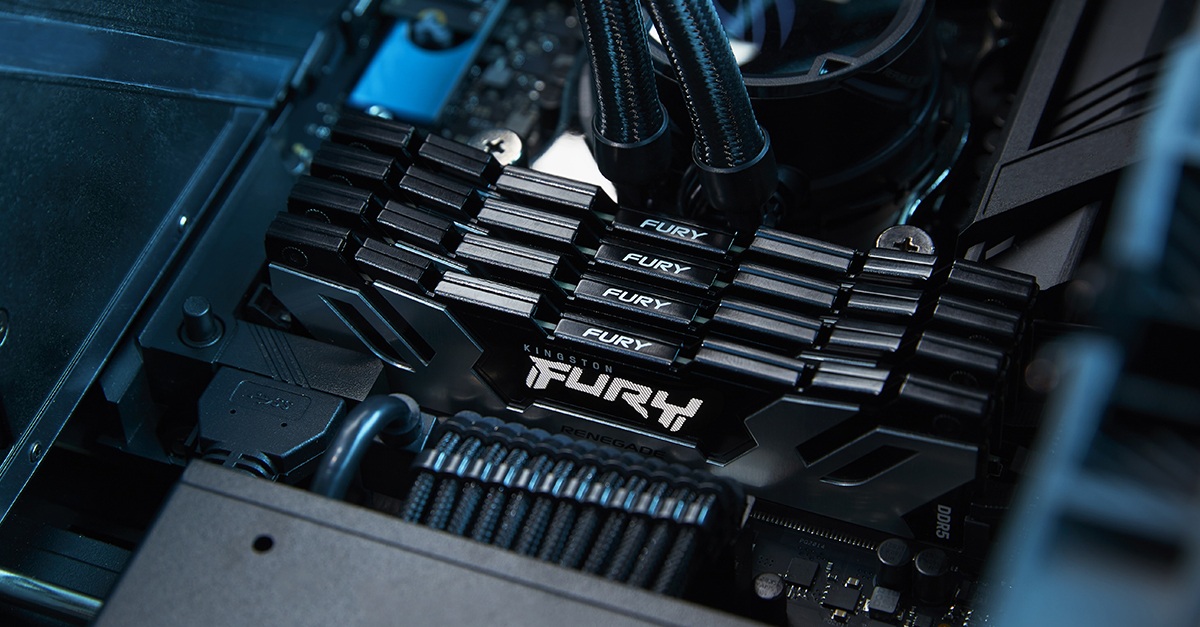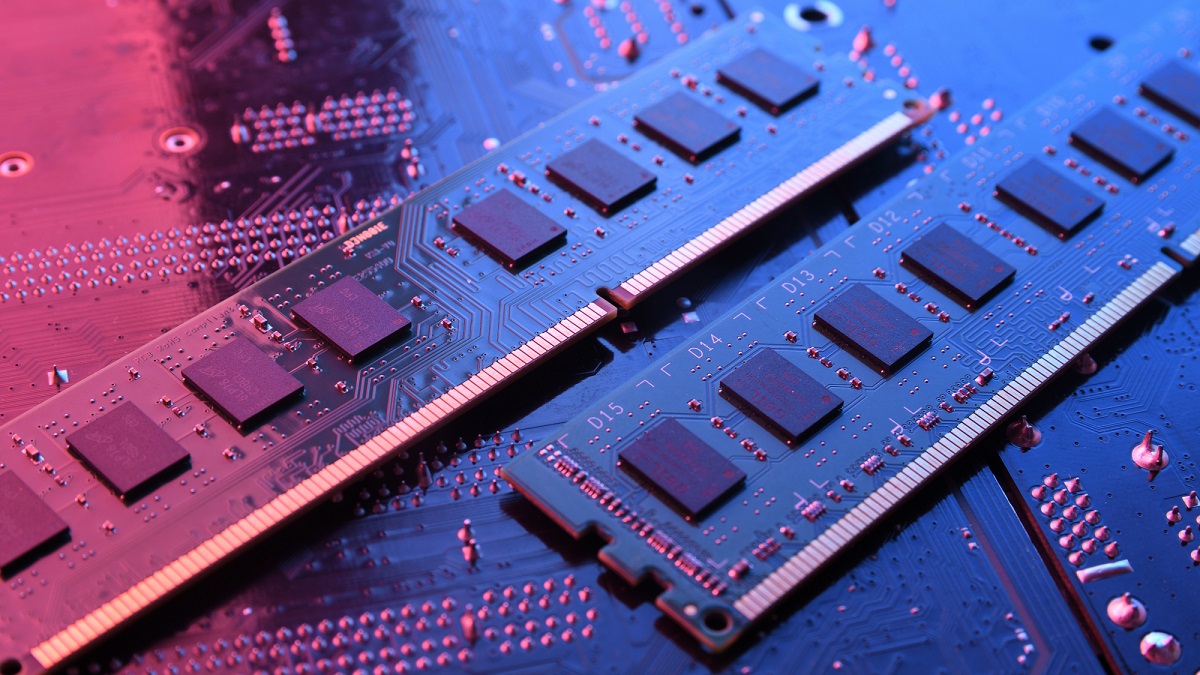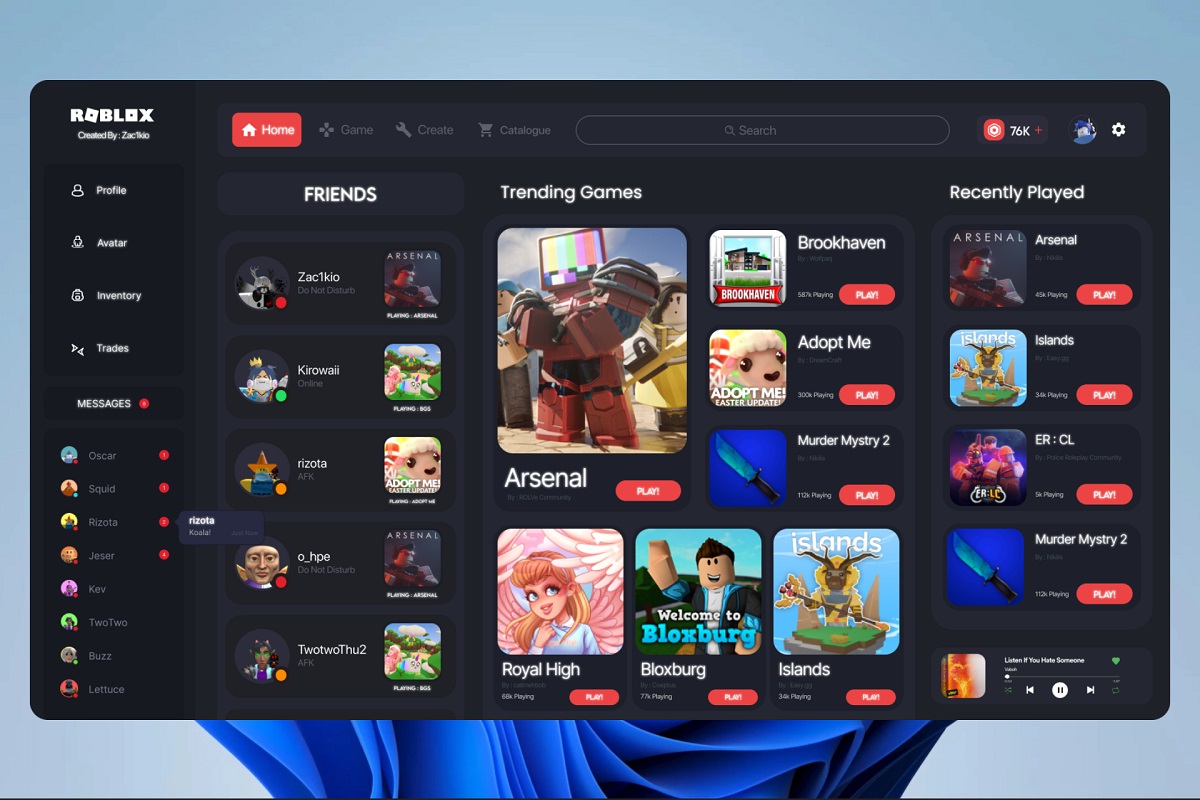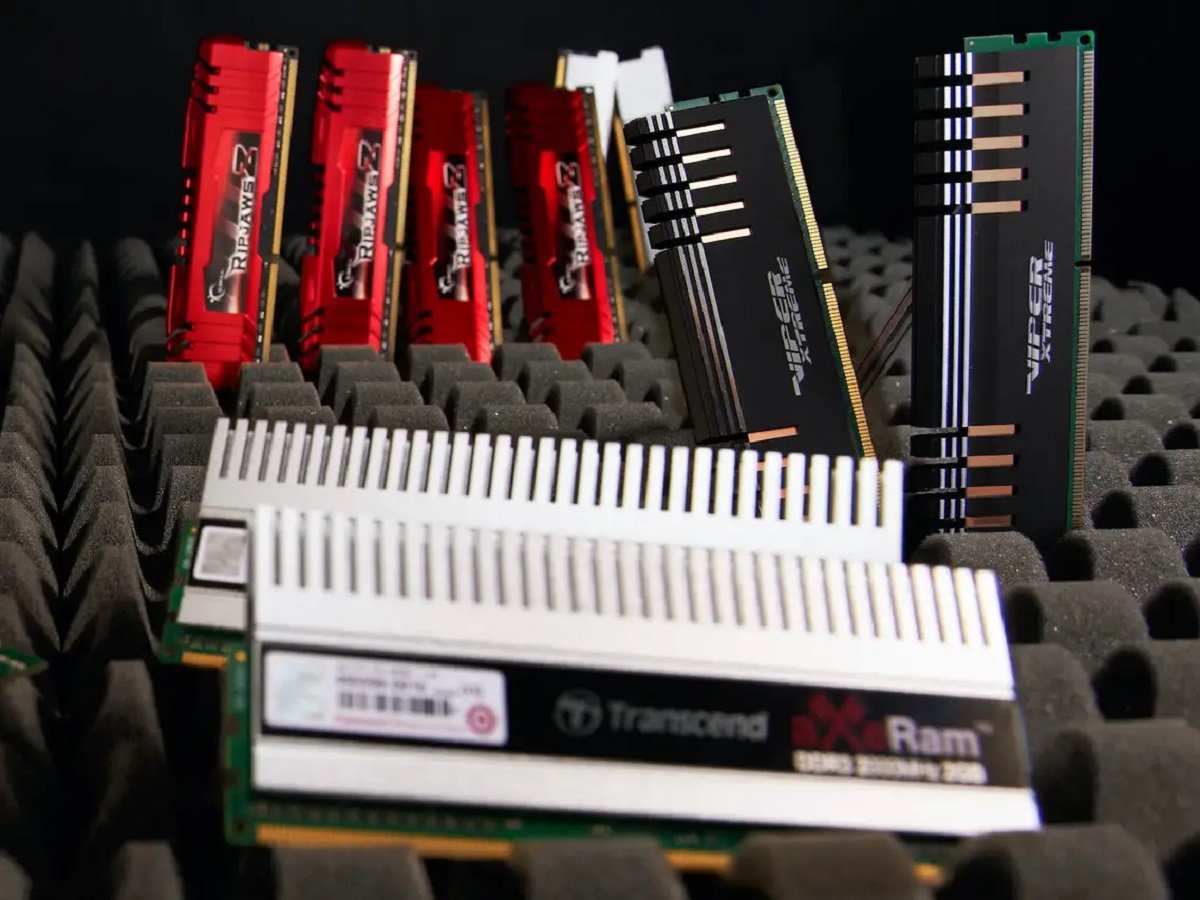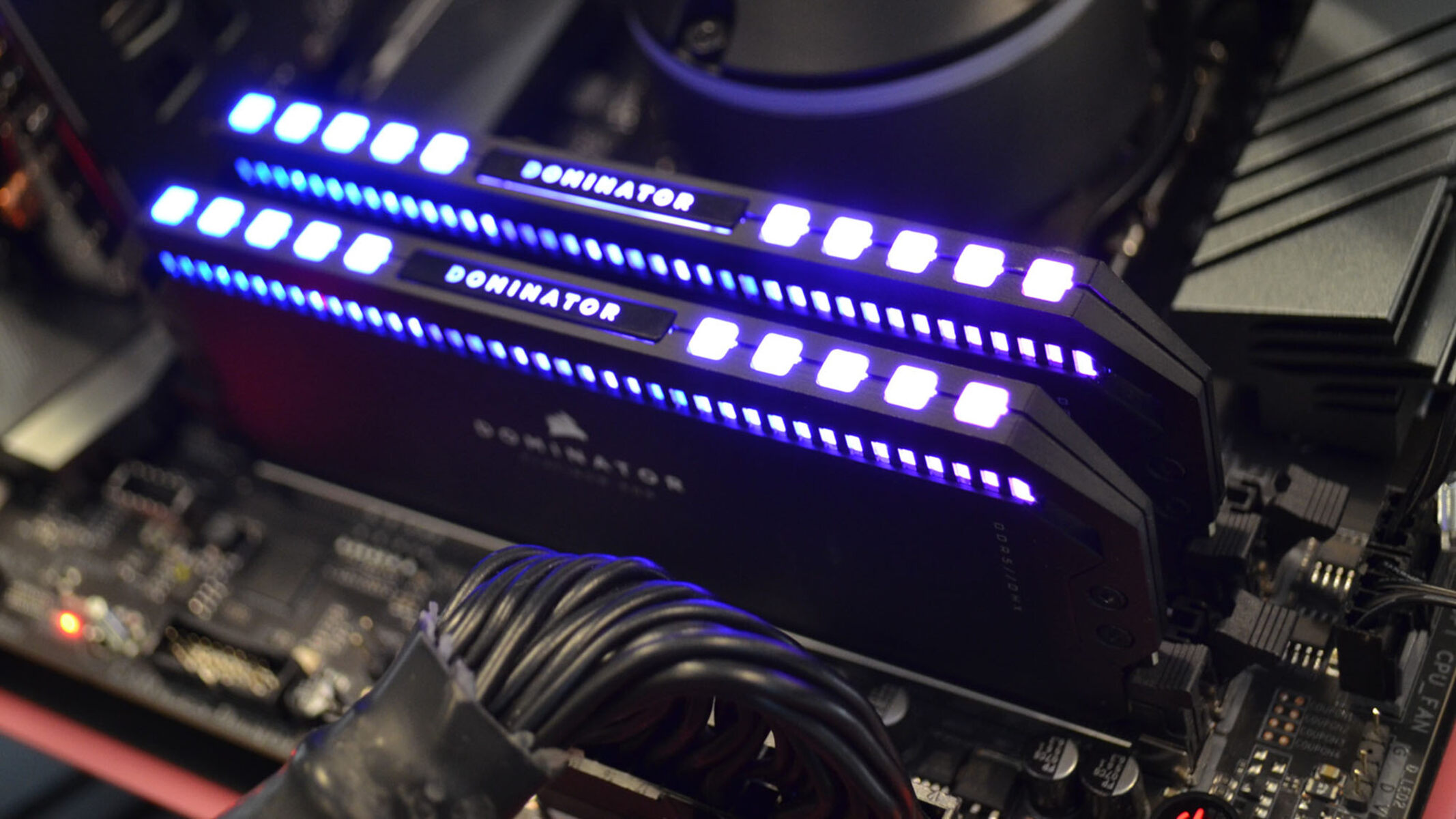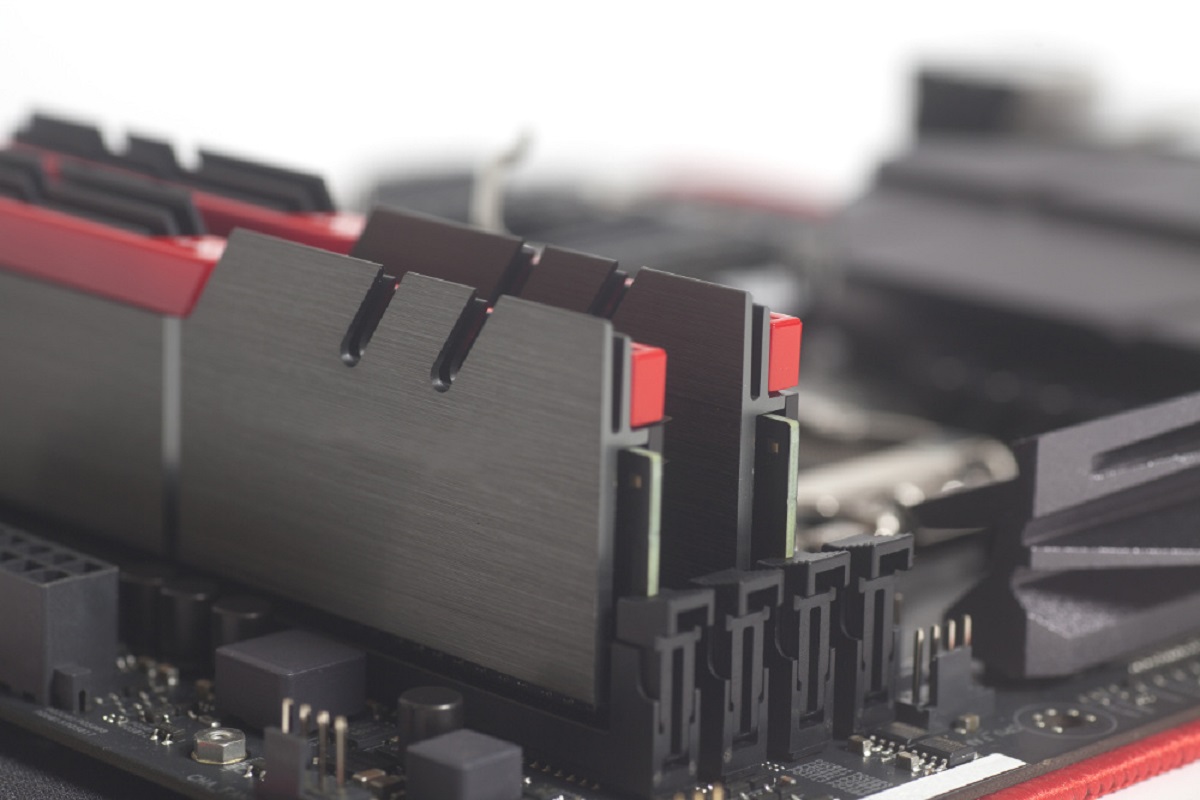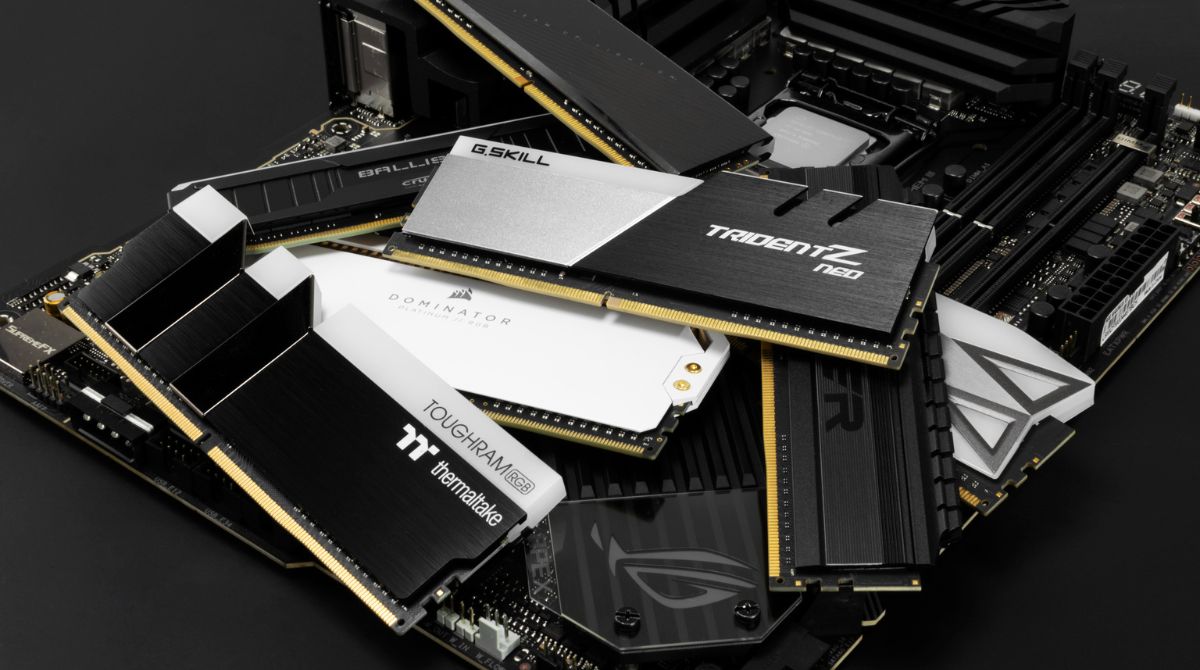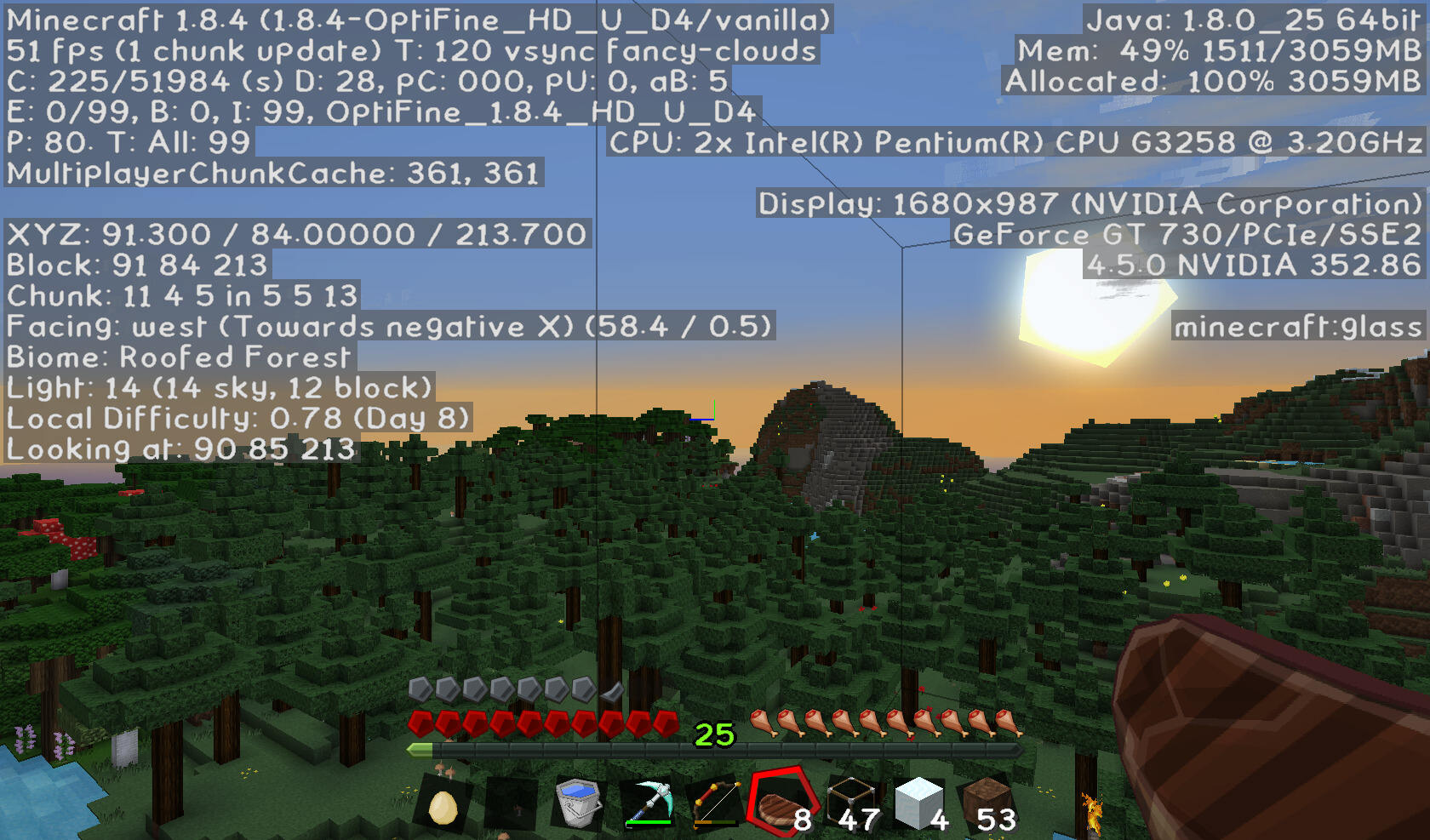Introduction
When it comes to gaming computers, one critical component that can significantly impact performance is RAM, or Random Access Memory. RAM plays a crucial role in storing and accessing data quickly, allowing games to run smoothly without delays or lag. As technology advances and games become more resource-intensive, the amount of RAM required for a smooth gaming experience has also increased.
In this article, we will explore the importance of RAM in gaming computers and discuss how much RAM is ideal for optimal gaming performance. We will delve into the minimum RAM requirements for gaming, as well as the recommended amount of RAM for an enhanced gaming experience. Additionally, we will explore how different games are affected by varying RAM capacities and the factors to consider when choosing RAM for gaming.
Moreover, we will explore the ways in which you can upgrade or add more RAM to your computer, as well as the concept of overclocking RAM for gaming purposes. By the end of this article, you should have a better understanding of how much RAM your gaming computer should have to enjoy a smooth and immersive gaming experience.
Importance of RAM in Gaming Computers
RAM, or Random Access Memory, is an essential component of gaming computers that plays a vital role in determining the overall performance and smoothness of gaming experiences. It serves as a temporary storage area where data is stored and accessed by the CPU and GPU for quick retrieval, allowing games to run efficiently without slowdowns or lags.
One of the primary functions of RAM in gaming computers is to provide quick access to game data, including textures, models, audio files, and other game assets. It allows the CPU and GPU to retrieve this data rapidly, reducing load times and enabling seamless gameplay. With larger and more complex games being released regularly, having adequate RAM is crucial to ensure smooth gameplay and prevent performance issues.
The amount of RAM in a gaming computer also affects multitasking capabilities. While gaming, the system may need to run background processes, such as anti-virus scans, streaming software, or voice chat applications. Insufficient RAM can lead to reduced performance and potential system crashes.
Furthermore, RAM plays a vital role in ensuring optimal frame rates and reducing input lag. It allows the CPU to store data that needs to be processed quickly, such as AI calculations, physics simulations, and rendering tasks. With sufficient RAM, the CPU can process this data efficiently, resulting in smoother gameplay and more responsive controls.
Another crucial aspect to consider is the impact of RAM on overall system performance. With ample RAM, the operating system and other software can utilize more memory for caching, which improves overall responsiveness. It enables faster loading times for applications and faster switching between programs, enhancing the overall user experience.
In summary, RAM is a critical component in gaming computers that directly influences gaming performance, multitasking capabilities, frame rates, input lag, and overall system responsiveness. Having adequate RAM ensures smooth gameplay, reduced loading times, and enhanced multitasking capabilities, providing an immersive and enjoyable gaming experience.
Minimum RAM Requirements for Gaming
When it comes to determining the minimum RAM requirements for gaming, it is essential to consider the system requirements specified by game developers. These requirements vary depending on the complexity and demands of the game, as well as the platform on which it is played.
For most modern gaming titles, the minimum RAM requirement is typically around 8 gigabytes (GB). This is the baseline amount necessary to run the game without encountering significant performance issues. However, it is worth noting that as games become more demanding, the recommended minimum RAM requirement may increase.
Games with larger open-world environments, high-resolution textures, and advanced graphics effects often require more RAM to ensure a smooth gaming experience. Some games may specify a higher minimum RAM requirement of 16 GB or even 32 GB. It is always advisable to check the system requirements provided by the developers to ensure your computer meets the minimum specifications.
Additionally, it is important to consider the operating system’s RAM requirements when determining the minimum RAM needed for gaming. For example, if you are running a 64-bit operating system, it is recommended to have at least 8 GB of RAM to accommodate the OS’s memory requirements in addition to the game’s needs.
While meeting the minimum RAM requirements enables the game to run, it is important to note that it may result in compromised performance. You may experience longer loading times, lower frame rates, and potential stuttering or lag, especially in more demanding game sections or during intense gameplay moments.
It is worth noting that meeting the minimum RAM requirements may not provide an optimal gaming experience. For smoother gameplay and improved performance, it is advisable to aim for a recommended or higher amount of RAM as specified by the game developers. This allows the game to run more efficiently and reduces the risk of performance issues.
To summarize, the minimum RAM requirements for gaming generally range from 8 GB to 16 GB, with some games requiring even more. Meeting the minimum requirements allows the game to run, but it may result in compromised performance. To ensure a smoother gaming experience, it is recommended to aim for the higher recommended or optimal RAM requirements specified by the game developers.
Recommended RAM for Gaming
While meeting the minimum RAM requirements is essential for running games, having a higher amount of RAM can significantly enhance the gaming experience. It allows for smoother gameplay, faster loading times, and improved multitasking capabilities. The recommended amount of RAM for gaming depends on various factors, including the type of games played, the desired graphics settings, and future-proofing considerations.
For most gamers, a recommended amount of RAM falls between 16 GB and 32 GB. This provides enough headroom for running modern games at high settings, even those with demanding system requirements. With this amount of RAM, you can enjoy a smoother gaming experience, reduced loading times, and improved overall system responsiveness.
Games with larger open-world environments, high-resolution textures, and advanced graphics effects tend to benefit from additional RAM. These games can take advantage of the increased memory to store and process more data, resulting in smoother gameplay and better visual fidelity.
In addition to gaming, having a higher amount of RAM allows for seamless multitasking. You can run background applications, such as voice chat software, game streaming programs, or web browsers, while gaming without impacting performance. This provides the flexibility to engage in other activities simultaneously, enhancing the overall gaming experience.
Furthermore, considering future-proofing is crucial when determining the recommended RAM for gaming. Games are continuously evolving, and their system requirements will likely increase over time. By opting for a higher amount of RAM, such as 32 GB, you can ensure your gaming computer remains powerful enough to run upcoming games without any performance constraints.
It’s important to note that while increasing the amount of RAM can provide benefits, there is a point of diminishing returns. Most games today do not require more than 32 GB of RAM, and allocating resources beyond that may not yield noticeable improvements in gaming performance. It is crucial to strike a balance between sufficient RAM and other components, such as the CPU and graphics card, to create a well-rounded gaming system.
To summarize, the recommended RAM for gaming typically ranges from 16 GB to 32 GB, providing the necessary headroom for running modern games at high settings and facilitating seamless multitasking. Considering the type of games played, desired graphics settings, and future-proofing, opting for a higher amount of RAM ensures a smoother gaming experience and allows for running upcoming games without performance limitations.
Impact of RAM on Gaming Performance
RAM, or Random Access Memory, has a significant impact on gaming performance and plays a crucial role in ensuring a smooth and immersive gaming experience. The amount of RAM in a gaming computer affects various aspects of gameplay, including loading times, frame rates, and overall system responsiveness.
One of the primary ways RAM impacts gaming performance is by reducing loading times. When launching a game or transitioning between different areas within a game, data needs to be loaded from storage into RAM. Having an ample amount of RAM allows for more game data to be stored in memory, resulting in faster loading times and seamless transitions.
RAM is also crucial for maintaining optimal frame rates during gameplay. When playing a game, the CPU and GPU constantly exchange data, including textures, models, and other game assets. With sufficient RAM, the CPU can store frequently accessed data, allowing for quicker retrieval by the GPU. This reduces input lag and ensures smooth gameplay without frame drops or stutters.
In addition to loading times and frame rates, RAM affects overall system responsiveness. If the available RAM is insufficient, the operating system may need to rely on slower storage devices, such as a hard disk drive (HDD) or solid-state drive (SSD), for virtual memory. This can result in performance bottlenecks, as accessing data from storage is slower compared to reading from RAM. With ample RAM, the system can store more data in memory, reducing the reliance on slower storage devices and improving overall system responsiveness.
Furthermore, having additional RAM allows for better multitasking capabilities while gaming. Many gamers like to run additional applications in the background, such as voice chat software, streaming programs, or web browsers. The more RAM available, the better these background applications can perform without impacting gaming performance. This flexibility enhances the overall gaming experience and allows gamers to engage in other activities simultaneously.
It is important to note that while increasing the amount of RAM can provide benefits, it is not the only factor influencing gaming performance. The CPU, GPU, and storage devices also have significant roles to play. It is crucial to have a balanced system with sufficient RAM, a powerful CPU, a capable GPU, and fast storage devices to unlock the full potential of gaming performance.
In summary, RAM has a substantial impact on gaming performance. It affects loading times, frame rates, and overall system responsiveness. Having sufficient RAM allows for faster loading times, smoother gameplay, and better multitasking capabilities. However, it is important to consider RAM in conjunction with other components to build a well-rounded gaming system that delivers optimal performance.
How Much RAM Do Different Games Require?
The amount of RAM required for different games can vary significantly based on their complexity, graphics fidelity, and system requirements. Game developers often specify the recommended and minimum RAM requirements to ensure optimal performance and gameplay experience. Let’s explore the RAM requirements for different types of games.
1. Casual and Indie Games: Casual and indie games typically have lower RAM requirements compared to AAA titles. Many casual games can run smoothly with 4 GB or 8 GB of RAM. However, it’s always a good idea to check the specific system requirements provided by the developers.
2. AAA Games: AAA games, known for their high-quality graphics, expansive worlds, and immersive gameplay experiences, usually have higher RAM requirements. The recommended RAM for most AAA games falls in the range of 8 GB to 16 GB. Some demanding AAA games may even specify a minimum requirement of 16 GB or higher.
3. Open-World and MMO Games: Open-world games with vast environments and massive multiplayer online (MMO) games often require more RAM. With larger game worlds, more textures, and a higher number of assets to load and render, these games benefit from having 16 GB or more RAM. Some MMOs may even recommend 32 GB of RAM for optimal performance, especially during crowded player interactions.
4. VR Games: Virtual reality (VR) games require additional resources to render two distinct high-resolution screens to achieve an immersive experience. As a result, the RAM requirements for VR games are typically higher than traditional games. Most VR games recommend having at least 8 GB to 16 GB of RAM, with some even suggesting 32 GB for smoother gameplay.
It is important to note that while these figures represent the recommended RAM requirements, the actual RAM usage may vary depending on other factors, such as the specific settings and resolution at which the game is played. Playing games at higher graphics settings, higher resolutions, or using graphics mods can increase the RAM usage.
Moreover, the RAM requirements may also depend on the operating system and background applications running simultaneously. For example, running a game alongside a voice chat software, streaming software, or web browser may require additional RAM to ensure smooth multitasking.
To determine the exact RAM requirements for a specific game, it is best to consult the system requirements provided by the game developers. These requirements are typically listed on the game’s official website or on gaming platforms such as Steam or Epic Games Store. Ensuring that your computer meets or exceeds the recommended RAM requirements will help guarantee a smooth gaming experience.
Factors to Consider when Choosing RAM for Gaming
Choosing the right RAM for gaming is crucial to ensure optimal performance and a smooth gaming experience. While the amount of RAM is a primary consideration, several other factors should be taken into account when making a decision:
1. RAM Capacity: The capacity of the RAM determines how much data can be stored and accessed simultaneously. It is recommended to have a minimum of 16 GB of RAM for gaming, although 8 GB can suffice for some games. For future-proofing and better multitasking capabilities, considering 32 GB or higher can be beneficial.
2. RAM Speed: The speed of the RAM, also known as frequency or clock speed, affects the data transfer rate between the RAM and other components. Higher-speed RAM can provide faster access to data, resulting in improved overall system performance. However, the impact of RAM speed on gaming performance is relatively small compared to other factors.
3. RAM Type: Different generations of RAM, such as DDR3, DDR4, and DDR5, offer varying performance and compatibility with motherboards. It is crucial to choose RAM that is compatible with your motherboard’s specifications. DDR4 RAM is currently the most widely used and offers good performance for gaming.
4. Timing and Latency: RAM timing refers to the latency between commands and the response time of the RAM. Lower latency, often indicated by timing numbers like CAS latency (CL), provides quicker access to data. However, the impact of timing and latency on gaming performance is generally minimal and may not be a significant deciding factor when choosing RAM.
5. Dual-Channel or Quad-Channel Configuration: Dual-channel or quad-channel configurations refer to the number of memory modules installed and how they are paired. Dual-channel configurations offer better performance compared to single-channel configurations, as they allow for increased data transfer rates. If your motherboard supports it, opting for a dual-channel or quad-channel configuration can enhance gaming performance.
6. Compatibility: It is essential to ensure that the chosen RAM is compatible with your motherboard and other hardware components in your gaming system. Check the motherboard’s specifications and consult manufacturer guidelines to select RAM modules that are compatible with your setup.
7. Budget: The cost of RAM can vary based on the capacity, speed, and brand. It is important to consider your budget and balance it with the desired performance and future-proofing needs. Investing in quality RAM from reputable brands can provide peace of mind and ensure reliability.
To make an informed decision when choosing RAM for gaming, it is recommended to consider the desired capacity, speed, compatibility, and budget. Understanding these factors will help you select RAM that best suits your gaming needs and provides optimal performance for your gaming system.
Ways to Upgrade or Add More RAM to Your Computer
If you find that your current RAM is insufficient for your gaming needs, or you simply want to enhance your computer’s performance, upgrading or adding more RAM is a relatively straightforward process. Here are a few ways you can upgrade your RAM:
1. Determine RAM Compatibility: Before purchasing new RAM modules, ensure that they are compatible with your motherboard. Check the motherboard’s specifications to determine the supported RAM type, capacity, and speed. It is also essential to consider the maximum RAM capacity supported by your motherboard.
2. Purchase Compatible RAM: Once you have determined the compatibility, choose RAM modules that match the specifications of your system. Consider factors such as capacity, speed, and brand to meet your requirements and budget.
3. Install the New RAM Modules: Shut down your computer and disconnect the power source. Open the computer case and locate the RAM slots on the motherboard. Gently insert the new RAM modules into the open slots, ensuring that they are seated securely. Follow the motherboard’s manual for proper installation instructions and recommended slot configurations for optimal performance.
4. Verify Successful Installation: After installing the new RAM modules, close the computer case and reconnect the power source. Turn on your computer and check if the new RAM is recognized by the system. You can verify this through the BIOS or by checking your computer’s system information.
5. Test System Stability: After upgrading the RAM, it is advisable to test the system stability by running a stress test or benchmarking software. This will help ensure that the new RAM modules are functioning correctly and no issues arise during intensive usage scenarios.
6. Consider Overclocking: If you want to extract additional performance from your RAM, you can explore the option of overclocking. Overclocking involves adjusting the RAM frequency and timing settings to achieve higher performance. However, it is important to note that improper overclocking can lead to system instability, so it should be done cautiously and within safe limits.
7. Seek Professional Assistance: If you are uncomfortable with or unsure about installing RAM yourself, it is recommended to seek assistance from a professional. They can help you select the right RAM modules for your system and ensure proper installation.
Remember to handle RAM modules with care, ensuring that they are not exposed to static electricity or physical damage during the installation process. By following these steps, you can successfully upgrade or add more RAM to your computer and enjoy improved performance for your gaming and other computing needs.
Overclocking RAM for Gaming
Overclocking RAM is a method used to increase the performance of RAM modules beyond their default specifications. By adjusting various settings such as frequency and timings, overclocking can result in higher data transfer rates and improved overall system performance. Overclocking RAM can be beneficial for gaming, as it allows for faster data access and potentially smoother gameplay. However, it is important to approach overclocking with caution and follow proper procedures:
1. Understand the Risks: Overclocking RAM involves pushing the modules beyond their designed limits, which can potentially result in instability or damage. It is crucial to understand the risks involved and accept responsibility for any consequences that may arise from overclocking.
2. Ensure Adequate Cooling: Overclocking RAM can generate additional heat, so ensure that your computer’s cooling system is sufficient to handle the increased thermal load. Proper airflow and cooling solutions, such as fans or liquid cooling, can help maintain stable temperatures during overclocking.
3. Access BIOS Settings: Overclocking is typically done by adjusting settings in the computer’s BIOS (Basic Input/Output System) or UEFI (Unified Extensible Firmware Interface). Restart your computer and access the BIOS settings by pressing the corresponding key during boot-up (often Del, F2, or F10).
4. Adjust RAM Frequency: Increase the RAM frequency gradually by selecting higher values in the BIOS settings. Monitor system stability after each adjustment to ensure that the overclocked RAM is working reliably. Keep in mind that not all RAM modules can achieve high frequencies, and stability will vary from module to module.
5. Adjust Timings: Along with frequency, you can also adjust RAM timings, such as CAS (Column Address Strobe) latency, RAS (Row Address Strobe) to CAS delay, and RAS precharge delay. Lowering these timings can result in improved RAM performance, but it may require trial and error to find stable settings.
6. Test Stability: After adjusting frequency and timings, it is crucial to test the stability of the system. Use stress-testing utilities such as Prime95 or memtest86+ to verify that the overclocked RAM is functioning properly and that the system remains stable under maximum load.
7. Monitor Temperatures and Stability: During and after overclocking, closely monitor system temperatures and stability. Use software utilities like CPU-Z, HWMonitor, or Core Temp to keep track of temperature levels and ensure they remain within safe limits. If instability occurs or temperatures reach unacceptable levels, revert to default settings or adjust the overclocked settings to lower values.
8. Proceed with Caution: Overclocking is a trial-and-error process that requires patience and careful observation. It is advisable to make small adjustments at a time and test system stability thoroughly to avoid any adverse effects on the overall system performance or hardware lifespan.
Finally, it’s important to note that not all RAM modules will overclock successfully, and results will vary between different motherboard and RAM combinations. Overclocking should be done only with proper knowledge, caution, and understanding of the risks involved. If you are unsure or uncomfortable with overclocking RAM yourself, it is recommended to seek assistance from experienced individuals or consult professional help.
Conclusion
RAM plays a critical role in the performance of gaming computers, impacting loading times, frame rates, and overall system responsiveness. Having the right amount of RAM is essential for a smooth and immersive gaming experience. While the minimum requirement for gaming typically ranges from 8 GB to 16 GB, it is often recommended to aim for 16 GB or more for optimal performance.
Consider factors such as the type of games you play, desired graphics settings, and future-proofing needs when choosing the amount of RAM for your gaming computer. Additionally, factors like RAM speed, timing, and compatibility with your motherboard should also be taken into account.
If you find that your current RAM is insufficient, upgrading or adding more RAM can be a viable solution. Ensure compatibility, purchase compatible RAM modules, and follow proper installation procedures to enhance your computer’s performance.
Overclocking RAM can further improve performance by pushing the modules beyond their default specifications. However, it is important to understand the risks involved, ensure adequate cooling, and carefully adjust settings while monitoring stability and temperatures.
In summary, RAM is a crucial component in gaming computers, and choosing the right amount and specifications can have a significant impact on gaming performance. By considering the factors discussed in this article and making informed decisions, you can optimize your gaming setup to enjoy smooth gameplay, faster loading times, and an overall enhanced gaming experience.







